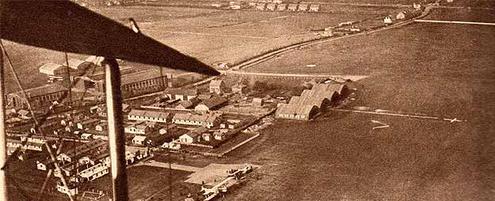Glen
Moderator
During the Global War, it was decided that Imperial London needed a dedicated Orca base. The Royal Army decided the ideal location would be to the south of the city in Croydon. Long transport link between London and the South, Croydon was also had an important history as a favorite retreat of the Archbishops of Canterbury.
After the Global War, the Croydon Flightbase in addition to serving as a peacetime base for the air defense of London, it also developed as a commercial and passenger hub for Air Whale flights throughout the British Isles, to the Continent, and even across the Atlantic to the Dominion of Southern America and USA.

While developed initially as a base for lighter-than-air flights, in the 20th century the Flightbase facilities were extended to provide heavier-than-air flight capability for ICEwings. While commercial flights tended to remain ligher-than-air, the Royal Army could see that the future of military aviation would belong to the ICEwing, and Croydon Flightbase by 1930 was a major part of the Empire's development of this capability.

After the Global War, the Croydon Flightbase in addition to serving as a peacetime base for the air defense of London, it also developed as a commercial and passenger hub for Air Whale flights throughout the British Isles, to the Continent, and even across the Atlantic to the Dominion of Southern America and USA.

While developed initially as a base for lighter-than-air flights, in the 20th century the Flightbase facilities were extended to provide heavier-than-air flight capability for ICEwings. While commercial flights tended to remain ligher-than-air, the Royal Army could see that the future of military aviation would belong to the ICEwing, and Croydon Flightbase by 1930 was a major part of the Empire's development of this capability.
